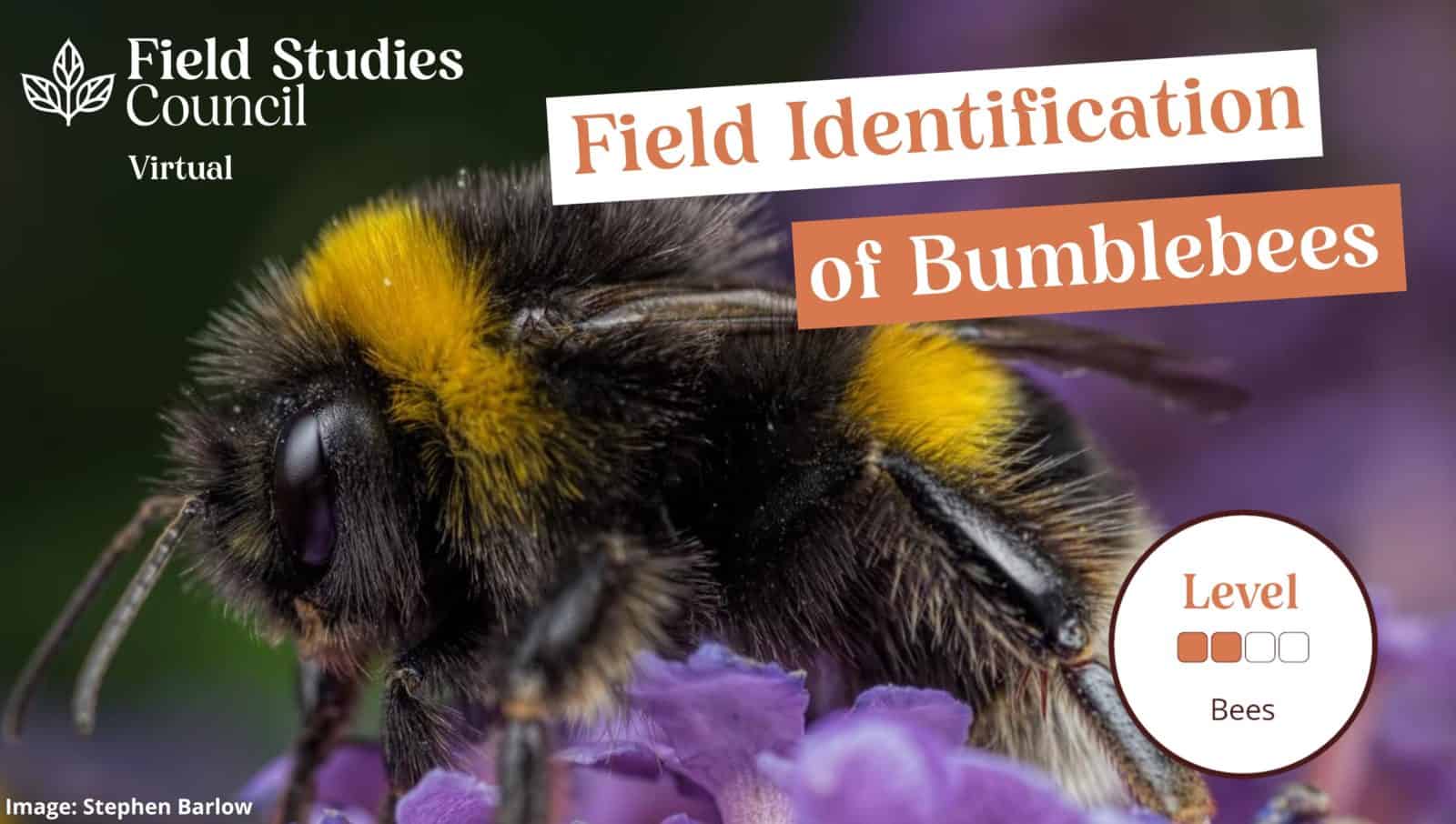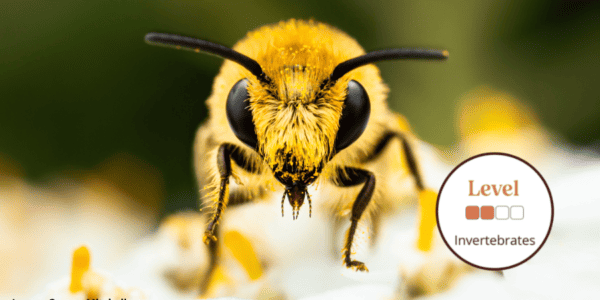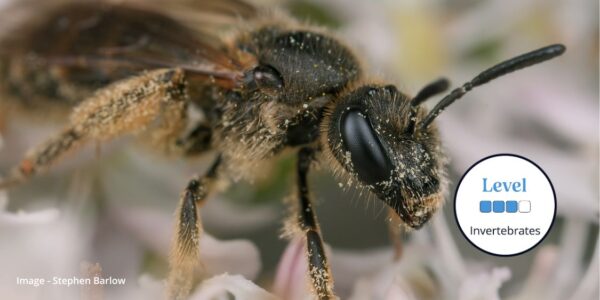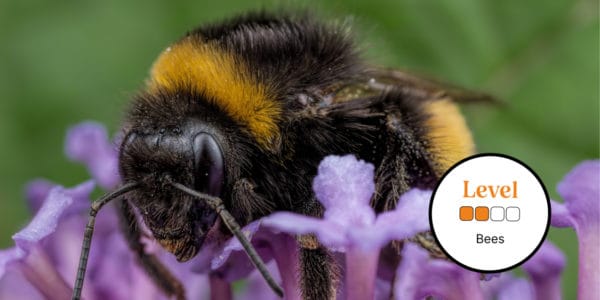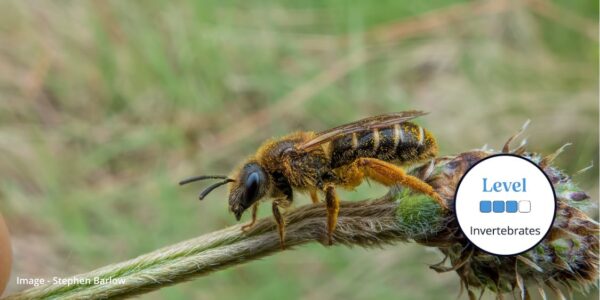Bumblebees are large, furry and charismatic insects that are known for their bumbling flight and distinctive buzz.
There are currently 24 species of bumblebee present in Britain, with 8 varieties being fairly widespread no matter where you live in the UK. By looking at the colour of their tails and banding, some bumblebees can be identified in the field. However, queens, males and workers can vary in their appearance making some species harder to identify than others. This means that identifying bumblebees isn’t always as straightforward as it seems. This course is designed for people who have no prior experience in bee identification but who are interested in learning more about the humble bumblebee and the different species we have in the United Kingdom.
During this course, you will be introduced to the fascinating natural history and important ecological roles bumblebees play within the ecosystem and are taught how to identify and record these charming insects.
- 4-week online course for adults, with a weekly time commitment of 3-5 hours per week.
- Access to study content, activities and tutor-graded assignments through the FSC virtual learning platform.
- Access to weekly live virtual classroom sessions at the end of each week with the course tutor through Zoom (recorded for those that are unable to attend the live sessions).
- E-certificate upon course completion.
- Learners will benefit from having access to a 10X hand lens and an insect or sweep net to get the most out of this course.
- Please email [email protected] if you have any questions.
What topics are covered in this course?
- BWA 207 Bumblebee Ecology & Behaviour starts with an overview of taxonomy, morphology and the life cycle of bumblebees, before covering how to tell bumblebees from mimics (such as moths, flies and other bees). It also covers aspects of ecology and behaviour such as diet, communication and defences.
- BWA208 The ‘Big 8’ British Bumblebees introduces field identification features used for telling different species of bumblebee apart. The most commonly observed bumblebee species found within the UK are introduced, with field ID tips for identifying each species. It also includes information on finding bees and an ID field assignment for learners to complete.
- BWA209 Bumblebee Diversity expands to cover field ID tips for the scarce and threatened bumblebees, as well as the cuckoo bumblebees. It also includes guidance on catching bees and a second field assignment for learners to complete.
- BWA210 Recording Bees covers why recording bees is important, what kind of information should be included in species records and where records can be submitted. It uses the bilberry bumblebee as a case study and a final field assignment for learners to complete.
Course fees
Regular Price: £60 For professionals and residents outside of the UK. Select ‘Attendee (Online)’
Subsidised Price: £20 Subsidised by the FSC Biolinks project for non-professionals eg. volunteers, biological recorders, wildlife gardeners, amateur naturalists and students.Available to UK residents only. Select ‘Attendee Discounted (Online)’
Tutor: Ryan Clark
Ryan Clark first became interested in wild bees while at university where he discovered how important these species are and how relatively little is known about their ecology and distribution. Since then he has been actively recording solitary bees and bumblebees and is the Northamptonshire vice-county recorder for bees, wasps and ants. Ryan works for the Wildlife Trust for Bedfordshire, Cambridgeshire and Northamptonshire as a Monitoring and Research Officer. In his spare time he is an active (some would say obsessive) biological recorder of a wide variety of taxonomic groups. Ryan also sits on committees for the Bees, Wasps and Ants Recording Society and the Botanical Society of Britain and Ireland (BSBI).
The webinars will take place every Tuesday at 7.00pm, these are recorded and uploaded to the online learning space afterwards for those that cannot attend live.
The webinars will take place on
- Tuesday 19th July 2022 at 7.00-7.45pm
- Tuesday 26th July 2022 at 7.00-7.45pm
- Tuesday 2nd August 2022 at 7.00-7.45pm
- Tuesday 9th August 2022 at 7.00-7.45pm
Example Timetable
Week 1: Bumblebee Ecology and Behaviour
Self-study material: available from 10am on 12/07/2022
Assignments due: 7pm on 18/07/2022
Week 1 live webinar: 7pm on 19/07/2022
Week 2: The Big 8 Bumblebees
Self-study material: available from 7pm on 19/07/2022
Assignments due: 7pm on 25/07/2022
Week 2 live webinar: 7pm on 26/07/2022
Week 3: Identifying Bumblebees in the Field.
Self-study material: available from 7pm on 26/07/2022
Assignments due: 7pm on 01/08/2022
Week 3 live webinar: 7pm on 02/08/2022
Week 4: Recording Bumblebees
Self-study material: available from 7pm on 02/08/2022
Assignments due: 7pm on 08/08/2022
Week 4 live webinar: 7pm on 09/08/2022
The final deadline to complete any outstanding assignments and self-study components is 7pm on 16/08/2022.
What's Included
- Access to study content, activities and tutor-graded assignments through the FSC virtual learning platform.
- Access to weekly live virtual classroom sessions at the end of each week with the course tutor through Zoom (recorded for those that are unable to attend the live sessions).
- E-certificate upon course completion.
Before You Attend
Once you've signed up to the course you'll receive an e-mail with access to the virtual learning platform (Moodle) a week before the first webinar.
Log on as soon as you can to familiarise yourself with the platform and course materials, and be sure to complete the first activities before the first webinar.
Webinars are delivered through Zoom, so you don't need to download any additional software to attend - just click the link just before the meeting is due to start and it will open in your web browser.
Learners will benefit from having access to a 10X hand lens and an insect or sweep net to get the most out of this course.
Sorry this course has ended

